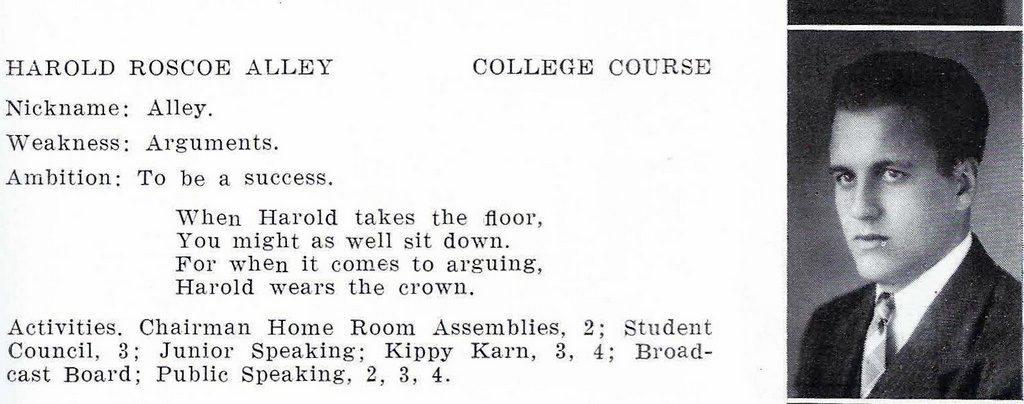
Harold Alley was the son of Eldad and Edith Alley who lived on Elm Street in Calais. Eldad is described in the 1935 Calais directory as a fish dealer.
Born in 1923, Harold attended Calais Academy in the late 30s and early 40s, graduating in 1941. A review of the yearbooks of his Calais Academy years suggests an outgoing and engaging classmate who excelled in debating and public speaking. After graduation Harold attended the University of Maine at Orono for a year and then moved to Providence Rhode Island where he worked for a company manufacturing precision instruments.
A short note in the Bangor Daily dated February 20, 1943 reports:
“Harold Alley, who has been employed in Providence Rhode Island, is visiting his parents, Mr. and Mrs. E.H. Alley.”
It is safe to assume that another employer with a lot more clout was now contending for Harold’s services as the Bangor Daily reported on March 30, 1943:
Paul Hollingdale and Harold Alley were among the Calais boys to be inducted into the armed services at Ft. Devens”
The official record has Harold’s enlistment date is March 18, 1943 at Bangor, rank private with one year of college, semi-skilled in the manufacture of automobiles, 5 feet 11 inches and weighing 195 pounds.

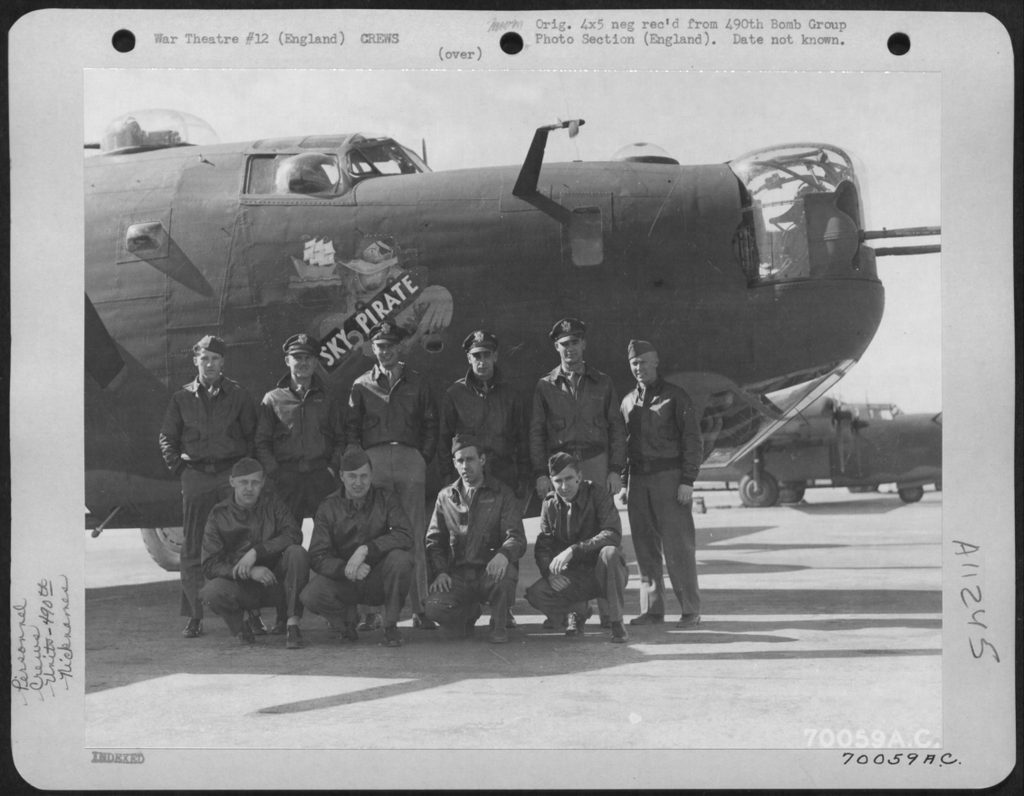
Harold was first assigned to a tank destroyer unit, but eventually wound up in the Air Force as the top turret gunner on the Sky Pirate, the B-24 bomber shown above. His squadron was flying out of Pantemella, Italy.
By any standards, the future of a top turret gunner on the B-24 in those days was not bright given the number of planes lost on most missions and the number of missions required to meet a crewman’s quota. Joseph Heller’s Catch-22 explains in somewhat exaggerated detail the lose-lose situation faced by aircrews in the Mediterranean theater of World War 2.
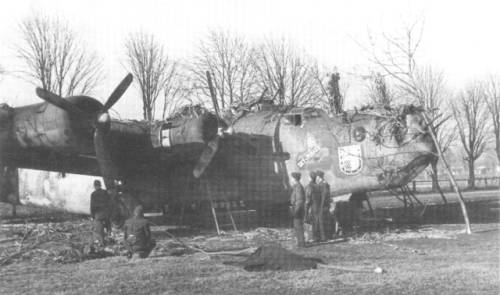
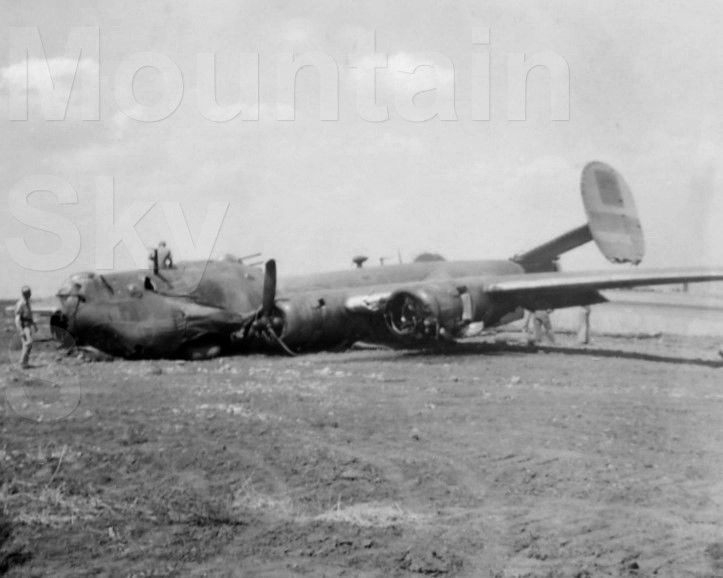
It is fair to say the Sky Pirate was not a lucky plane, at least while Harold was a crew member. On Harold’s second mission, the Sky Pirate crash landed in a Yugoslavian field in a part of Yugoslavia controlled by the Ustase, a violent Croatian nationalist militia known for atrocities against Serbs, Jews and anyone else who disagreed with them. They were firm allies of Hitler and the Nazis and were soon on at the scene of the crash. Harold described the experience in a newspaper article, this one from the Bangor Daily, February 27th, 1945.
LANDED IN YUGOSLAVIA 15th AAF IN ITALY—
Crash landing in a Yugoslavian cornfield when his plane ran out of gas. Sergeant Harold R Alley 21 Calais escaped injury.
The son of Mr. and Mrs. R H Alley Elm Street Sgt Alley was returning from his second mission over the Blechhammer oil refineries in eastern Germany. “Sure it was a rough one,” said Alley’s assistant engineer and top turret gunner on a Liberator bomber of the Fifteenth Air Force
“Blechhammer is a long haul from our base and there’s always the danger of running out of gas on the way back— we did this trip.”
The pilot of Alley’s bomber sighted a corn field while flying over mountainous Yugoslavia and rather than take a chance on bailing the crew out or ditching in the Adriatic decided to try a crash landing. A peasant and his wife working in the field never moved as the big plane slithered over the field and jolted to a stop. “They were Partisans,” said Alley “and were accustomed to most everything and a bomber dropping in on them was just something else that happened. They took us to town and the people couldn’t do enough for us. When we went into a barber shop the barbers jumped to attention and saluted us. We really felt like big shots. I’m not allowed to say how we got back to our base, but it was quite an experience being with those people.”
A graduate of Calais academy Sgt Alley was employed by Brown and Sharp Manufacturing company in Providence until his induction in March 1943. He arrived overseas last November.
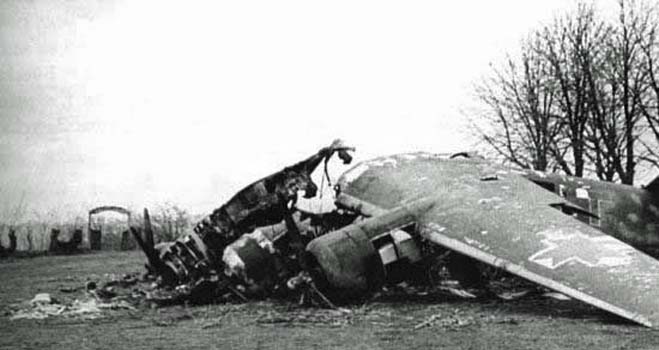
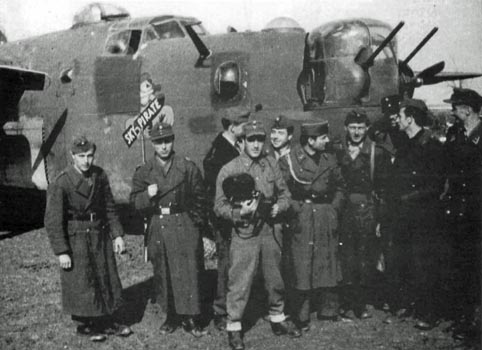
The day after the crash Allied fighters destroyed the wrecked plane to prevent the Germans and their allies from salvaging any useful parts. Harold and the rest of the crew were smuggled back to friendly lines with the assistance of an “underground railroad” operating in the area.
Harold was extremely lucky. The Ustase were known for their unbridled, sadistic violence against all enemies, real or perceived to the point that even the Gestapo complained about their conduct to the German High Command. Luckily for Harold and his crew the Germans were retreating from the area and the Ustase could see the handwriting on the wall: it was time to switch sides and this required an attitude adjustment toward Allied flyers. If the crash had occurred a few weeks earlier Harold and his crew might well have been lucky to have been taken prisoner rather than be dealt with summarily by the Ustase.
Within a month the Brits took the area and the Ustase flocked to British lines to surrender only to be turned over to the local population they had terrorized for years. Their fate was grim.
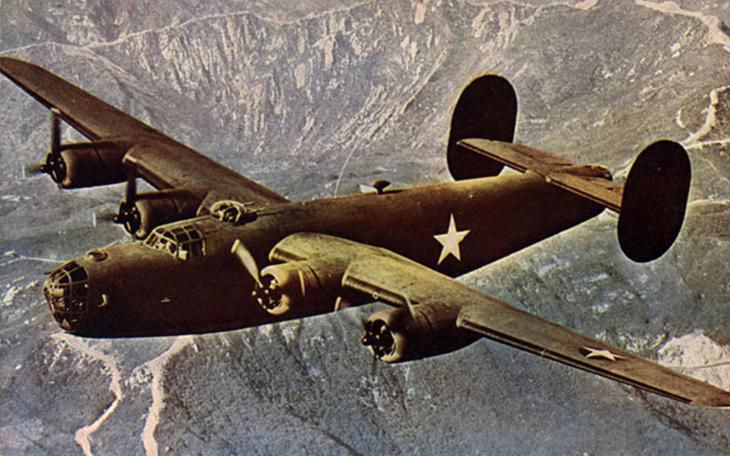
It wasn’t long before Harold was back in the air in another unlucky B-24 and back on the ground again behind enemy lines. This time he was not so lucky and Harold became a prisoner of war.
According to the official records of Allied Prisoners of War, 1941-1946, he was “Returned to Military Control, Liberated or Repatriated” on June 5, 1945. The Russians liberated him but we have no other details of his captivity or capture.
On October 10, 1946 the Bangor Daily News reported Harold had re-enrolled at the University of Maine and was a dorm proctor. In the late 40s he taught at Hampden High School and coached their basketball team while finishing his Master’s program at the university. During the Korean War he was recalled to duty.
Bangor Daily December 1951:
Former Calais Boy Hampden Academy Teacher In Army
CALAIS Dec 7—
A former Calais boy who was a teacher and coach at Hampden academy is now serving as army information officer at Fort Devens Mass. He is Second Lt Harold R Alley son of Mr. and Mrs. E H Alley of Calais who is back in the army again for the second time after a brief interlude at the University of Maine and Hampden Academy. Alley was first drafted in 1943 and assigned to a tank destroyer outfit where he rose to the rank of Sergeant. Soon afterward he entered the army for specialized training program for soldier-students of college calibre.
When the program was disbanded Alley wound up in the Air Force and eventually became a top turret gunner in a B-24 bomber. He was shot down twice. The first time on his second mission he was picked up by Yugoslavian partisans and returned through the underground to Allied control. The second time he wasn’t quite so lucky. He was wounded and captured and placed in a prisoner of war camp in Yugoslavia. Three months later and several days after the armistice was signed, he was liberated by the Russian army.
When Alley returned to civilian life, he entered the University of Maine and received his B. A. in history and government and his M. A. degree in 1950. In 1948 he started teaching at Hampden academy. After the Korean crisis broke Alley, a student in R O T C when he was at the University of Maine was among the reserve officers called to duty. In a recent interview for an army publication Alley was quoted as saying he liked army life on his second time around and is seriously considering making it his lifetime career. He and Mrs. Alley are living at Devencrest Mass.
In the 50s, he was the principal of the Lunenburg High School in Massachusetts and in the 60,s he and his wife Claire, together with their two daughters, had moved to New Jersey. He maintained contact with his hometown, attended class reunions and died in August of 1991.
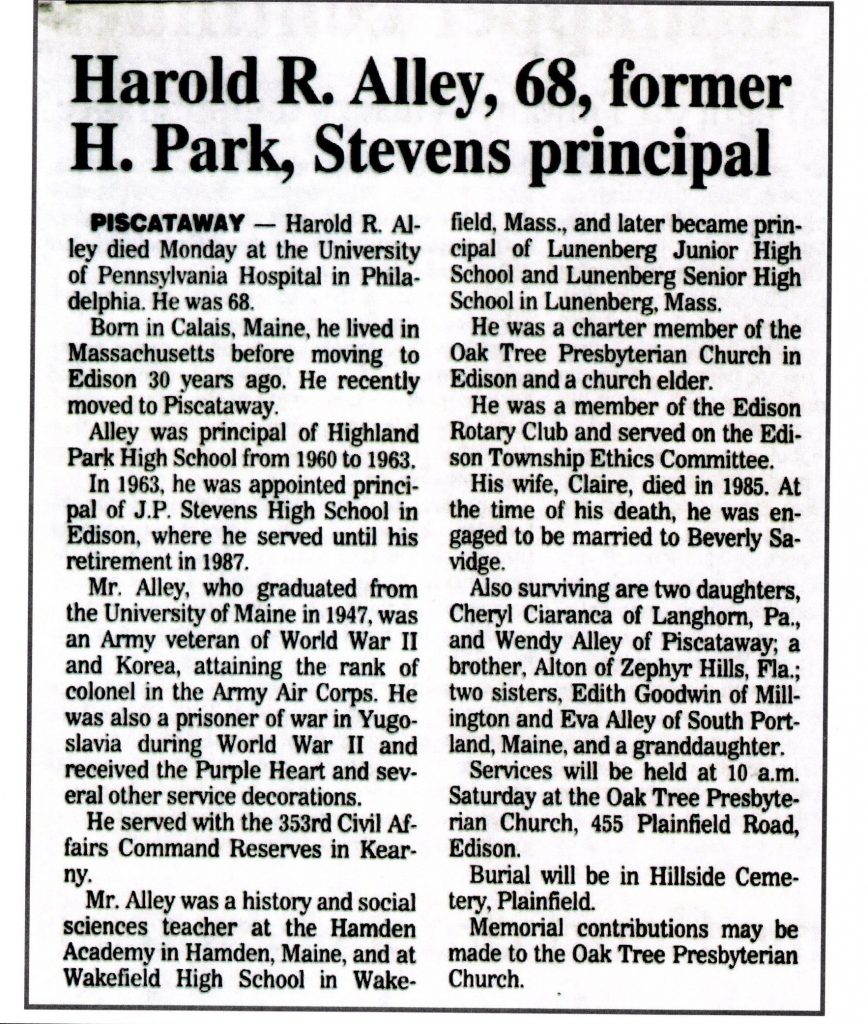
Hundreds of men from this area served in the Second World War and although not all had the type of experiences described above there were many who did.
Some, like John D. McFarlane, didn’t wait until the United States entered the war to get into the action. This was, of course, a violation of the U.S. Neutrality Law but it didn’t stop dozens from this side crossing into New Brunswick to join the Commonwealth forces in its life and death struggle against Hitler.
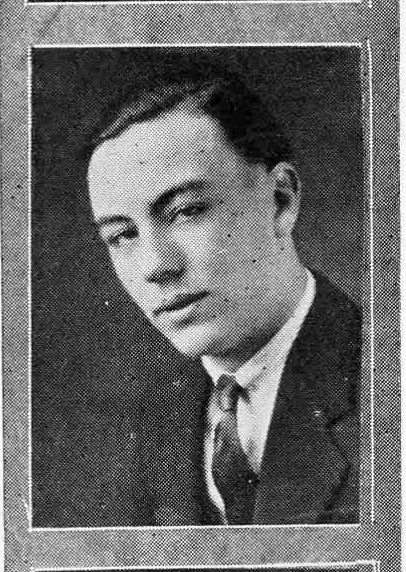
John graduated from Calais Academy in 1935, and like a lot of young people during the Depression, he seemed to be at rather loose ends. He did find a job at the shoe factory at the bottom of Barker Street in 1938 but the job didn’t hold much future. Shoe factories had had their day here in the St. Croix Valley, so when Canada entered the war against Hitler, John packed his kit bag, walked across the bridge and signed up to be a pilot in the Royal Air Force.

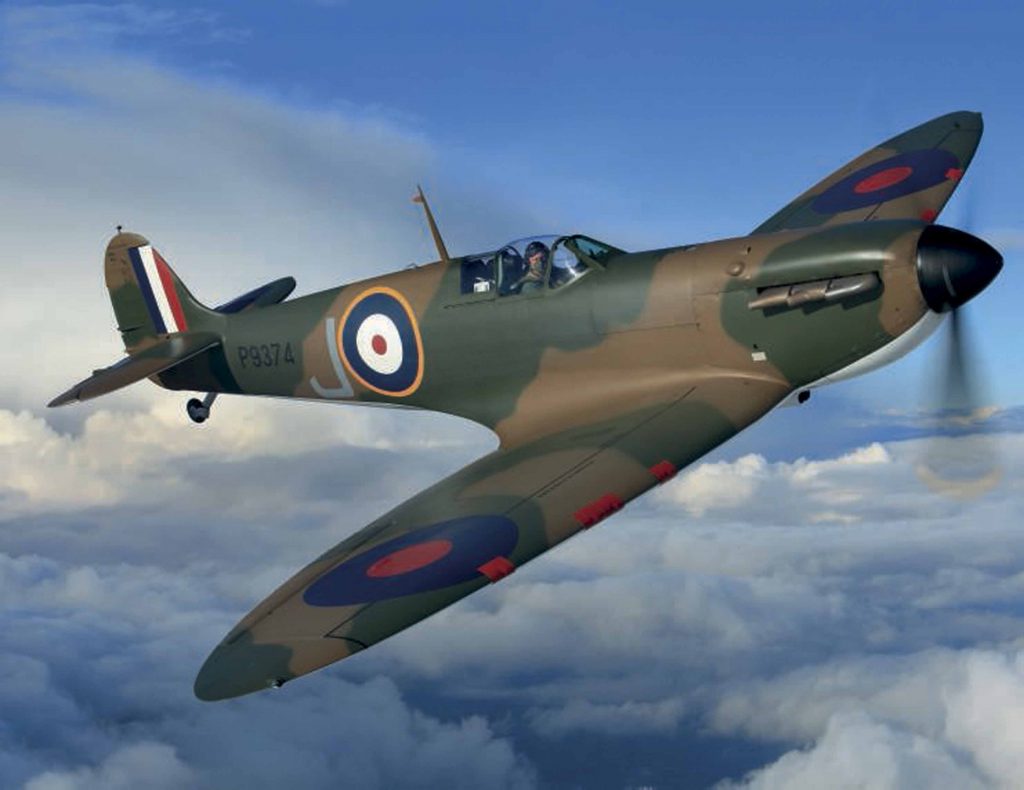
On
December 5 1941, while Admiral Yamamoto’s strike force was moving into
position to attack Pearl Harbor, The Ottawa Citizen published John’s
description of his first combat action in his Spitfire fighter:
Ottawa Citizen 5 December 1941:
Trained in Ottawa. Sgt. Pilot J. D. McFarlane. Calais. Maine, who trained at Prince Albert, Regina and Ottawa, described his part in the squadron’s initial scrap: “I felt a sudden explosion under me and I felt a hit on my leg. My cockpit filled with gray smoke. I wasn’t certain whether I was being attacked by enemy aircraft or flak. Looking at my wings I saw a number of small holes in them and the port wing was covered with oil. I headed for the English coast and about two minutes later my engine stopped. I was up about 23,000 feet when the fun started so I glided down. A Rhodesian squadron leader covered me all the way back. At about half a mile from the coast I slowed down and bailed out. I landed between Dover and Folkestone about 200 yards inland. My leg wound was only slight and I was flying two days later.” The new Spitfires are popular with the Canadian fighter pilots.
After war was officially declared between the United States and Germany, John flew Mustangs for the remainder of the war as an officer in the United States Army Air Corps. He remained in the service after the war, and in 1951 was stationed in Baltimore and held the rank of Lieut-Colonel. In 1956 he was stationed in Germany but returned from Germany later that year. He died in Las Vegas in October 1974. [Read more of John’ story in “The English Bride“.]
We want to thank Jack Alley, Harold’s nephew and Calais High Class of 1956 for providing us much of the information for this article and the photos from Yugoslavia.
